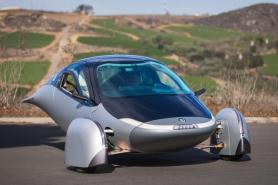
[Courtesy of KIER]
SEOUL -- Researchers have developed a non-destructive technique to recycle discarded solar panels to create high-performance solar cells. The technique will become crucial in a few decades when solar panels that are currently being used are discarded after their operational life of about 20 years.
A solar panel is a photovoltaic module made of materials such as glass, aluminum, silicon and copper. It uses sunlight as a source of energy to generate direct current electricity. A solar cell is a black mirror-like electrical device that is the key component of a solar panel. Techniques have been researched to maximize the efficiency of recycling solar panels.
The state-run Korea Institute of Energy Research (KIER) said in a statement on August 19 that a technique developed by its research team led by Lee Jin-seok enables the recycling of solar panels. The institute said the new technique can recycle both undamaged and damaged panels to achieve up to 100 percent retrieval rate of glass components. About 80 percent of other materials can be retrieved and recycled into high-performance solar cells.
Researchers were able to refine silicon collected from 72 discarded commercial panels into six-inch single crystal ingots and wafers. Recycled materials were used in the production of solar cells with a generation efficiency of about 20.52 percent. Normal solar cells have an energy efficiency of about 15 percent.
"Recycling a ton of discarded solar panels has the effect of reducing 1.2 tons of greenhouse gases so this technique is the absolute key to achieve net-zero emissions," KIER head researcher Lee Jin-seok was quoted as saying. KIER has transferred the technique to HST, a domestic solar energy generating equipment maker, for commercialization.
According to the Korea Environment Institute's data, some 27,627 tons of panels would be discarded domestically in 2032.
In an effort to achieve net-zero carbon dioxide emissions by 2050, South Korea has beefed up its green energy-generating capabilities. The country's solar energy generation capacity has grown rapidly to reach about 21,820 solar power generators with a total output of some 3.65 gigawatts (GW) as of November 2020. A gigawatt of capacity can produce electricity capable of powering about 300,000 households for a year.
Copyright ⓒ Aju Press All rights reserved.



![[K-Tech] Hanwha Q Cells joins US petition to curb solar panel imports from Chinese-controlled firms](https://image.ajunews.com/content/image/2025/07/18/20250718110410353245_278_163.png)
